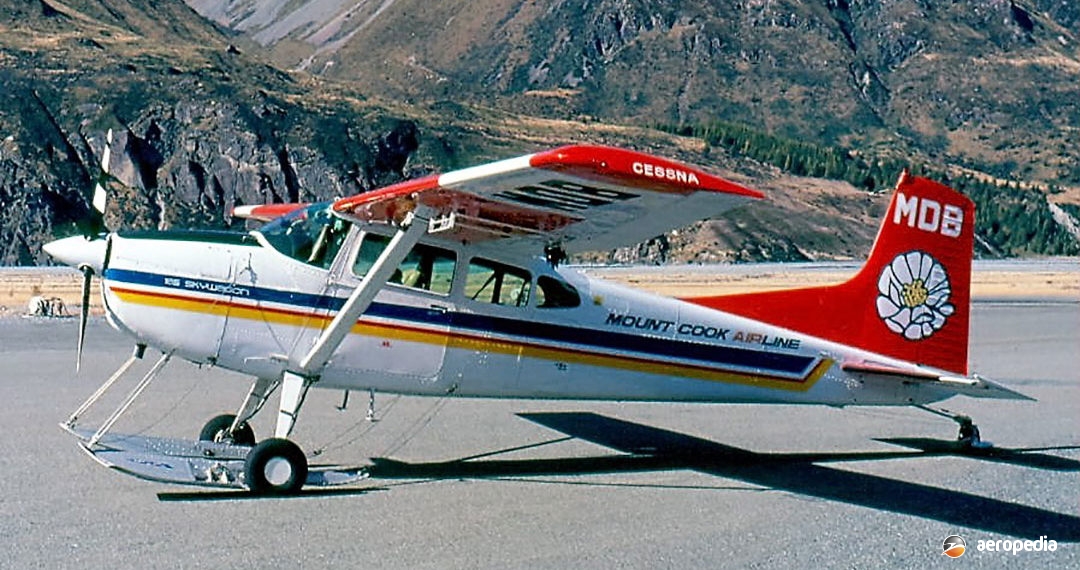Photograph:
Cessna A185F Skywagon ZK-MDB (c/n 185-4258) at Mt Cook, NZ in April 1992 (David C Eyre)
Country of origin:
United States of America
Description:
Light utility monoplane
Power Plant:
(A185F)
One 224 kw (300 hp) Teledyne Continental IO-520-D six-cylinder horizontally-opposed air-cooled engine
Specifications:
- Wingspan: 10.92 m (35 ft 10 in)
- Length: 7.85 m (25 ft 9 in)
- Height: 2.36 m (7 ft 9 in)
- Wing area: 16.2 m² (174 sq ft)
- Max speed at sea level: 287 km/h (178 mph)
- Cruising speed at 75% power at 2,286 m (7,500 ft): 269 km/h (167 mph)
- Rate of climb at sea level: 308 m/min (1,010 ft/min)
- Service ceiling: 5,227 m (17,150 ft)
- Range at 269 km/h (167 mph) at 2,286 m (7,500 ft): 759 km (471 miles)
- Max range at 3,048 m (10,000 ft): 1,333 km (828 miles)
- Empty weight: 767 kg (1,690 lb)
- Loaded weight: 1,520 kg (3,350 lb)
History:
Intended to meet the requirements of ‘bush’ fliers around the world, the Cessna 185 was designed as a rugged utility aircraft. By early 1980 4,000 examples had been delivered. Based on the Model 180, the Model 185 was structurally re-designed to carry greater payloads at higher speeds. It had a high-lift wing with modified Frise-type all-metal ailerons and 2.7 m² (28.8 sq ft) of Para-Lift flaps, which were fitted to assist landing and take-off at rugged fields.
The Cessna 185 first appeared in 1961 powered by a 194 kw (260 hp) Continental IO-470 engine. In its passenger configuration it could seat six, and its useful load was greater than the aircraft’s empty weight. A fibreglass 136 kg (300 lb) cargo-pack could be carried under the fuselage to increase capacity. Like its predecessor, it could be operated as a ski-plane, floatplane or amphibian. Many have been used in the light freight role, having the seats removed. The type has also been used extensively in the agricultural role, this leading to the development of the Ag Carryall variant with a 571 litre (126 Imp gal) chemical hopper.
The type proved quite popular throughout the world, and was supplied to a number of air forces, the USAF obtaining 497 as the U-17A, U-17B and U-17C. The Skywagon also was supplied to other nations under the US Military Assistance Program.
In 1979 optional wheel fairings were offered. These increased speeds by one knot. A McCauley three-blade propeller could be ordered for smoother, quieter flight, and more ground clearance. The latter was fitted to a number of Model 185s in Australia, especially the floatplanes, to reduce noise.
Some 50 examples have been registered in Australia, and at least a dozen of these have been fitted out as floatplanes or amphibians. Over 50 examples have been registered in New Zealand. More than 4,300 examples had been built when production concluded in the 1980s.

